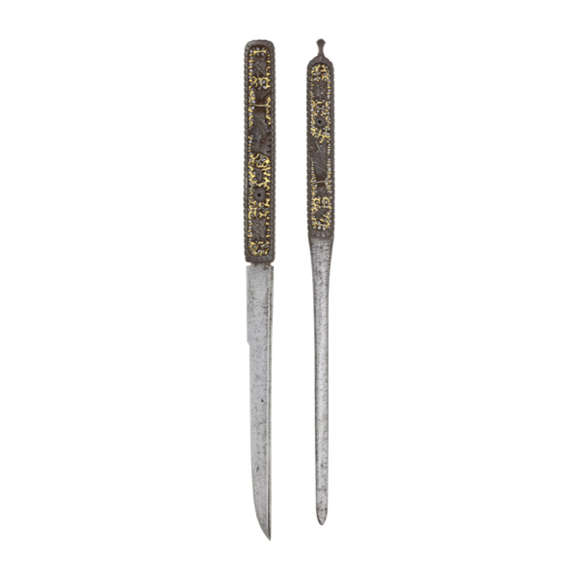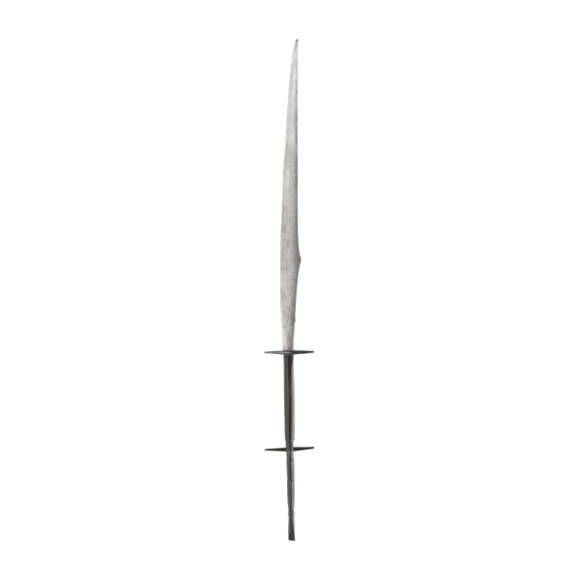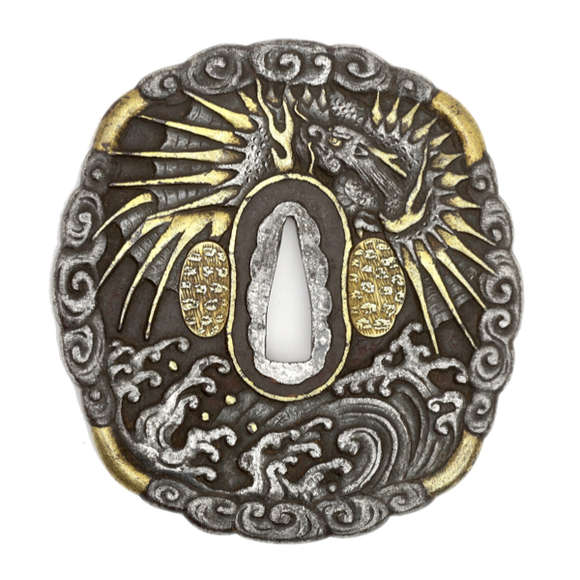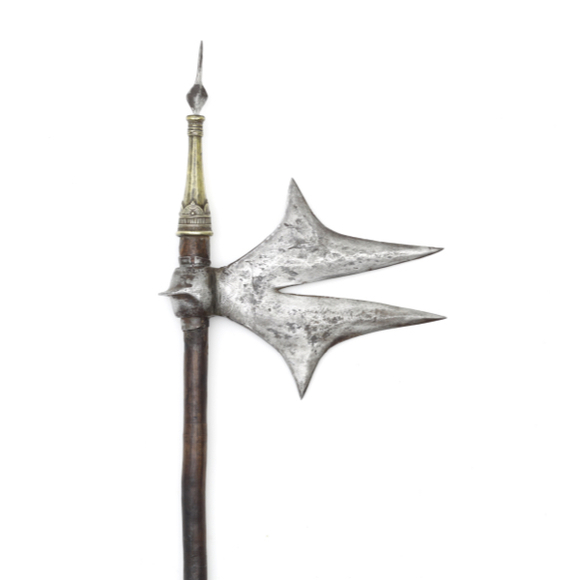The only set of its type known to me in both private and museum collections.

Sheathed 117.8 cm
Sword 117 cm
98 cm
Base 5.5 mm
Middle 4.5 mm
Start backedge 2 mm
Base 32 mm
Middle 28 mm
Start backedge 28 mm
1002 grams
19 cm from guard
Iron, steel, gold
New scabbard: wood, leather
(Some remains of red fabric and silver wire around grip)
India
Probably Deccan
17th-18th century
Robert Hales
Introduction
Firaṅgī (फिरंगी) literally means "foreigner". It is used to describe European swords that are mounted in Indian hilts, usually Hindu basket hilts. Such swords were mainly popular in the Deccan in the 17th century and 18th centuries but also saw use in north India. The mounted blades could be either straightsword blades or curved sabers.1
These imported blades were exotic and expensive, and so naturally, the firaṅgī was sort of a status symbol, seen carried by important people like Rajput rulers or Deccan sultans. Even Mughal emperors Shah Jahan (1628-1658) and Aurangzeb (ruled 1658-1707) are often portrayed with a firaṅgī in hand.2
Notes
1. See glossary article; firaṅgī (फिरंगी)
2. See for example the portraits of Mughal emperor Shah Jahan in the St. Louis Art Museum, Minneapolis Institute of Art, Yale University Art Gallery and a portrait of Aurangzeb (ruled 1658-1707) in the San Diego Museum of Art. For a Deccan sultan, see the portraits of Ibrahim Adil Shah II of Bijapur and Abdallah Qutb Shah of Golconda. Rajput rulers, see Raja Karan Singh of Bikaner. This is just scratching the surface, many more rulers carried them. The Royal Collection Trust has quite a few portraits of courtiers and rulers leaning on their firaṅgī.

Shivaji, founder of the Maratha Empire and his men.
Many armed with long swords with Hindu basket hilts.
From Monuments anciens et modernes de l'Hindoustan, 1821.
From a drawing then in the Royal Library.
This example
A fine Indian firaṅgī with a very long, lightly curved European blade. It has three grooves on either face and a sharp backedge at the tip. The blade is riveted to the hilt's langets. The hilt has the typical European spring temper.
Hilt
The Hindu basket hilt is of typical form, with a long back spike. The functionality of the spike is described by W.F. Sinclair in 1873:
"The hilt (kabjâ) of the first three varieties is often surmounted by a spur; useful both for guarding the arm, and for a grasp for the left hand in a two-handed stroke." 1
-W.F. Sinclair, August 1873
List of weapons used in the Dakhan and Khandesh
The Indian Antiquary Vol. 2. Pages 216-217.
The hilt further has a large hand guard and knuckle bow. It is entirely overlaid with gold, almost all of it still intact.

It features a rare type of decoration where all faces are decorated with small triangles, framed by floral scrolling on the borders. This type of geometric decor is very hard to do because every mistake is immediately obvious in a way that it would not be when the motifs are flowing, which is the case with the more usual floral decor seen on these.
Notes
1. W.F. Sinclair; List of weapons used in the Dakhan and Khandesh. The Indian Antiquary Vol. 2. August 1873. Page 216-217.
Comparable examples
A firaṅgī of very similar form, differing mostly in surface decoration, once belonged to the Tipu Sultan and was taken from his bedroom during the Siege of Seringapatam of 1799 where Tipu Sultan lost his life. The sword was presented by Lord Mornington, April 2nd,1800. It has the same three fullered European blade as ours has.
Royal Collection Trust, accession number RCIN 62755.
Another firaṅgī, very similar in form of both blade and hilt is in the Rathore Armory in Jodhpur fort. Agin with tri-fullered blade. It has a Marathi inscription on the spine attributing it to a member of the Bonsle Maratha ruling family. It possibly entered the fort when Madaji Bonsle took refuge there during the rule of Man Singh. This sword and hilt were dated 17th for the blade and late 17th to early 18th century for the hilt.1
Notes
1. Robert Elgood; Rajput Arms & Armour, Niyogi Books, New Delhi, 2017. Volume 1. Page 315.
Scabbard
The original scabbard was lost, but the sword miraculously retained its original, matching chape. A new scabbard was recently made, covered with black pebble-grained bookbinder's leather, much like which was used in North India and Persia at the time. The old chapel was added to this scabbard in the hope it stays with the piece for centuries to come.

Conclusion
A very nice example of a firaṅgī, most likely of Deccan origin. Such pieces were worn as side arms and status symbols by the wealthy.


























These mysterious weapons were already obsolete when the first ethnographers encountered them.
This peculiar sword was used by the Garo people of Assam for fighting, clearing the jungle, and animal…






